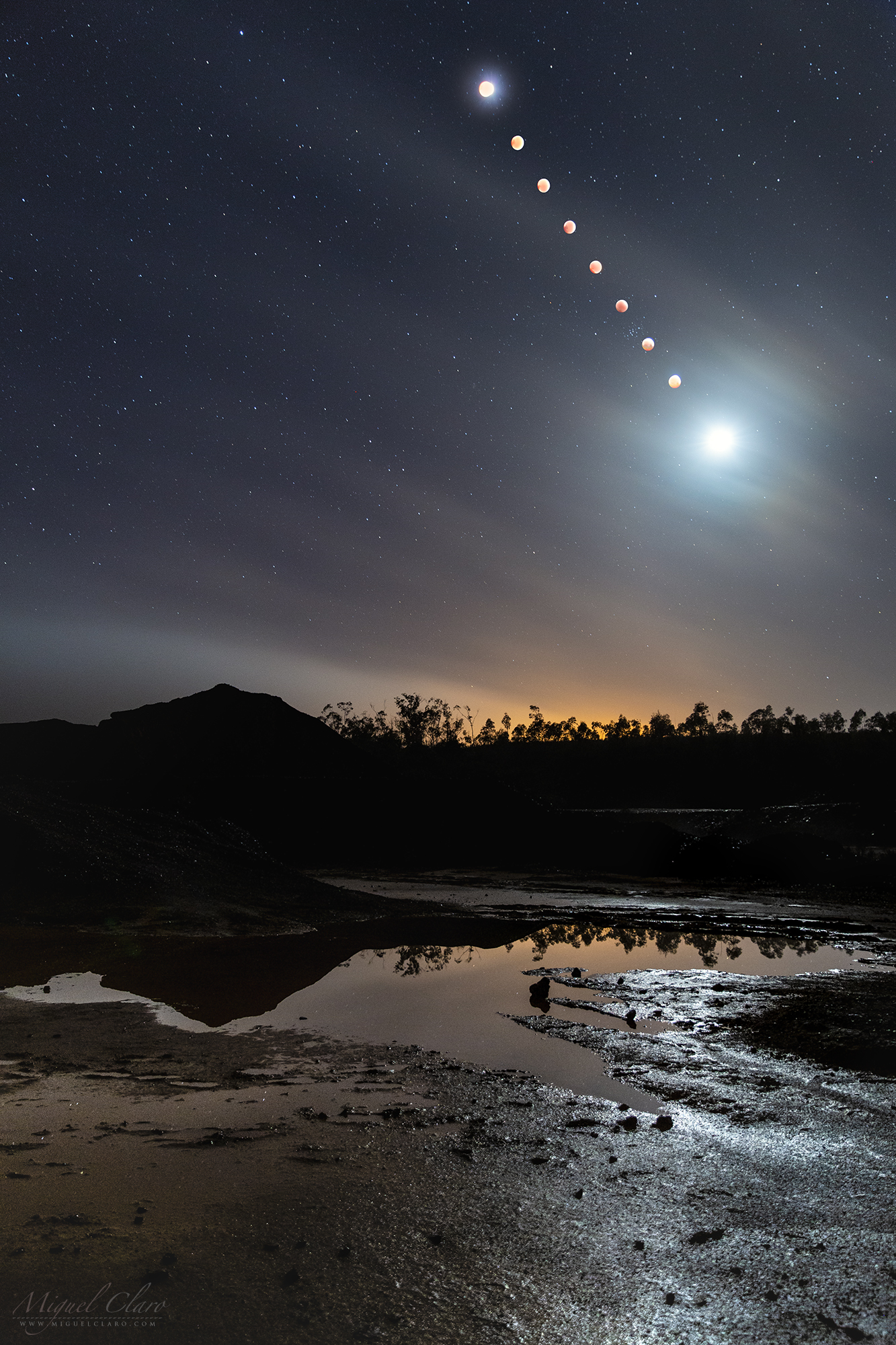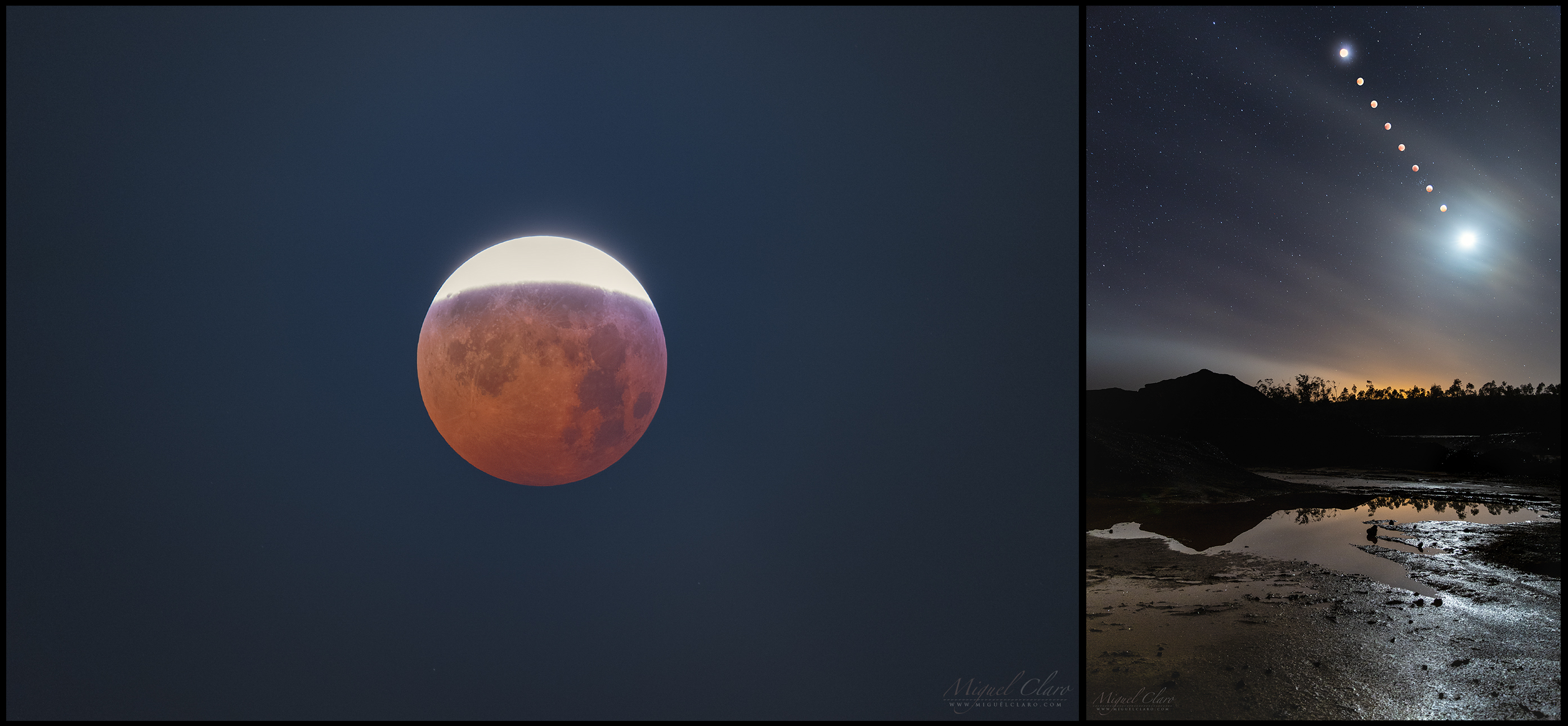The 'Super Blood Wolf Moon' Ends with a Lunar Corona in Gorgeous Time-Lapse Photo
Miguel Claro is a professional photographer, author and science communicator based in Lisbon, Portugal, who creates spectacular images of the night sky. As a European Southern Observatory Photo Ambassador and member of The World At Night and the official astrophotographer of the Dark Sky Alqueva Reserve, he specializes in astronomical "Skyscapes" that connect both Earth and night sky. Join Miguel here as he takes us through his photograph "The Path of Totality and a Lunar Corona."
A photo time-lapse sequence shows the path of totality during the Super Blood Wolf Moon of Jan. 20-21, 2019, ending with a lunar corona. This glowing, halo-like feature forms around the moon when bright moonlight is diffracted by water droplets in thin clouds, drifting in front of the lunar disk.
During a lunar eclipse, the moon passes through Earth's shadow, giving the natural satellite a blood-red hue. Because the moon also happened to be near the closest point to Earth in its orbit, this moon was also called a "supermoon." The next total lunar eclipse will be in 2021, and the next supermoon will be on Feb. 19. [Amazing Photos of the Super Blood Wolf Moon of 2019!]
During a celestial event like this, it is incredible to notice huge changes in the reflected light that illuminates the ground of Mina de São Domingos at the Dark Sky Alqueva Reserve in Mértola, Portugal. The landscape of this old mine is mainly composed of heaps, slag and channels of water, giving the scene a Martian ambience. The heaps are composed of different materials with high levels of metals, and also contain slag and ash, which leach through the rainwater and produce acid mine drainage, usually with an ocher or reddish color.
Below is a poster with a close-up view of the moon immersed in the blue hue from the corona.
To create the image sequence, I used a Canon 6D DSLR camera set to capture a 15-second exposure for each frame, with the ISO set to 1600 and with a 24-70mm lens, set to 30-millimeter at f/2.8. The result is a composite of nine photos showing the moon's path across the night sky.
Breaking space news, the latest updates on rocket launches, skywatching events and more!
For the close-up view of the moon in the second photo, I used a Nikon D810a DSLR camera set to capture a 1,3-second exposure, with the ISO set to 1600 and with a Sigma DG OS HSM Sports 150-600mm lens, set to 600-millimeter at f/6,3.
To see more of Claro's amazing astrophotography, visit his website www.miguelclaro.com. Follow us on Twitter @Spacedotcom and on Facebook. Original article on Space.com.
Miguel Claro is a professional photographer, author and science communicator based in Lisbon, Portugal, who creates spectacular images of the night sky. As a European Southern Observatory photo ambassador, a member of The World At Night and the official astrophotographer of the Dark Sky Alqueva Reserve, he specializes in astronomical skyscapes that connect Earth and the night sky.



